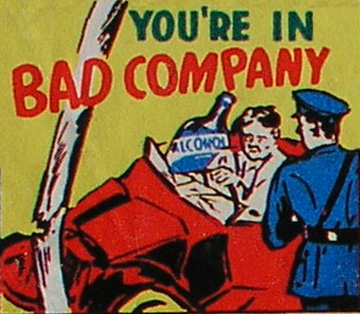
Thank you for your attention.

Thank you for your attention.
They met again in Superior Court, Douglas Ralford, electrical engineer of Long Beach, and Dr. W. R. Senseman, Lancaster hospital owner, and his nurse, Alma Carleton. The last time was November 4, 1946, when Vivian Ralford gave birth to an apparently stillborn son.
Alma told Vivian her child was dead moments after his birth; seven hours later, wrapped in paper in the morgue, baby was heard to cry. He was hurried back to the nursery, where he died two hours later of exposure.
The Ralfords were seeking $100,000 in damages, but reached a pre-court deal through Attorney S.S. Hahn and Senseman’s insurance company, believed to be in the range of $5000.
Yes, I love their embittered hearts and unrepentant drug addiction and that I love their overblown need for role playing is an unfortunate matter of public record, but their fundamental incapacity to discern between “alive” and “dead,†that’s the part of nursing that weirds me out.
But Ralford Jr. rose-like Lazarus, with Nurse Alma’s bidding? Or did the li’l revenant self-resurrect, rolling his rock away from the entrance of the morgue? In any event, pointless theological speculation aside, Junior up and dies again, making him some sort of undead I Am Legend spawn.
All in all, the question remains, what’s a dead baby worth? Above and beyond the nine months of minimum wage that is your due? The Ralfords asked for 100k and settled for five. Telling. Of course, kid would have grown up to be one of those self obsessed boomer types. Ahem.
This much we know with certainty: screams from a morgue-there’s a sound you won’t soon forget.
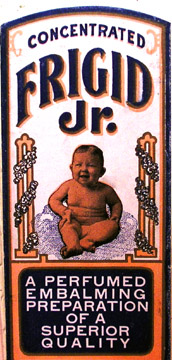
Nathan and Kim are back on the air this week in a moody mood piece scribed by KNX investigative reporter Michael Linder, the L.A. Press Club’s 2004 Radio Journalist of the Year. You can hear our spot throughout the hourly news round ups either on Thursday or Friday, and probably thoughout the weekend, on KNX-1070 AM.
The peace of little Sharon Lee Christensen’s sleep was shattered tonight when a late model sedan crashed through the wall of the 5-year-old’s bedroom at 8852 Cynthia Street and came to a stop atop the child, with only her mattress protecting her from certain death.
The incident began when Lucille Bianchi, 20, a nurse, parked her car on a steep grade on Larrabee Avenue near Sunset Boulevard. The car rolled free and Lucille hopped onto the running board, struggling frantically to get inside and throw the brake. Before she could, the car smashed through the Christensen’s wall, with Lucille along for the ride. She was taken to West Hollywood Emergency Hospital with a possible broken pelvis. Sharon Lee, meanwhile, went to sleep in a less drafty part of the house.
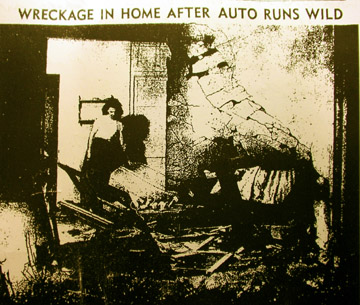
I don’t buy it. Not for a minute.
Here’s Larrabee’s “steep grade†as spoken of in the paper’s account: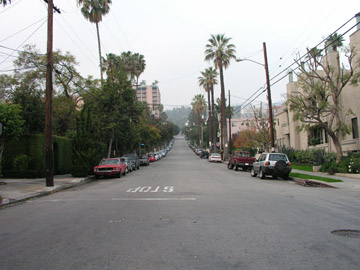
And after the car barrelled down that grade, it would have had to have turned this sharp corner-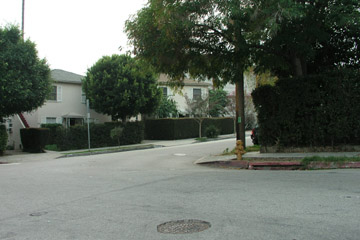
To then hit 8852: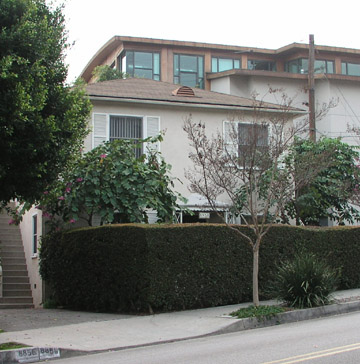
–no. I stand by my estimation of 19 December (uh, and of 21 December) wherein I take nursing to task. At the risk of conjuring the ire of the American Nursing Association, I put it to y’all, that Lucille “Registered Nurse†Bianchi’s auto was somehow bewitched by said’s nursing powers. That which can be equated with nursing invariably invokes madness, mayhem and death. Prove me wrong, ANA? Didn’t think so.
Bianchi’s auto. An inanimate object animates itself. That’s hard to do. Under the direction of a nurse, however-
Yeah yeah, leave nurses alone. Nurses see more death than doctors. Hell, nurses see more death than do most Army sergeants. The only gals who see more death than nurses are lady morticians.
(Those of you who, like this humble writer, only date nurses and morticians know that one cannot, under any circumstances, put both in the same room at the same time. Neither oil and water, nor fire and ice, between the two, it’s fire and another kind of fire- but on the Crazy Scale, nurses outstrip morticians 11-5. Trust me on this one.)
He didn’t obey the boulevard stop, so cops pulled him over. Donald I. Smith, 50, sat in his car in front of 1640 S. Robertson and eyed the rearview as the officer walked towards him. By the time the man reached the car, Smith was slumped over the dash with a bullet in his head. He died an hour later in Santa Monica Hospital. File under: you’ll never take me alive, copper.
It didn’t take long to determine that Smith was the man wanted for kidnapping his 14-year-old stepdaughter Sheila Shirley Marilyn Morrison from her aunt’s place in Leucadia on Christmas. The girl had already been found safe in a hotel in La Mesa.
Smith must have known they were going to catch him. He left a series of mocking notes in the car. One read: “To John Law–Greetings, John. Our relations to the best of my memory in the past were never overaffectionate. It’s all been strictly business, so let’s keep it that way. My name is Donald I. Smith. My address is Nebula M-17. Any astronomer can tell you, but it’s too far to bother going there. Nebula M-17 is quite a journey and it may tire your flat feet. Happy New Year and may all your kids be born with flat feet. I was educated at three prisons. I’ve been in jails too numerous to mention. I’ve got a long prison record.”
No one bothered to check to see if Nebula M-17 burned a little dimmer in mourning.
History does not record what transpired between the two from the moment of Sheila’s abduction and her discovery in that hotel, but if it was worthy of daddy’s suicide, we can assume it was nothing good.
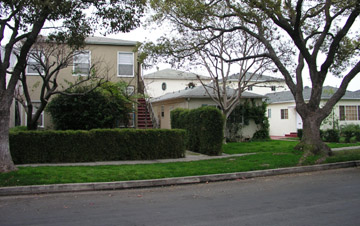
Had Donald rolled down the window of his Nash, or Plymouth, or Hudson, as the bulls approached? Did the folks within this handsome collection of prewar apartments hear a muffled pop, or a startling crack? Could Sheila-Shirley feel his head explode, wherever she was?
Each family celebrates the season in their own way. Some have carolling and stockings, some make a respectful visit to church, others opt for Chinese food and a double feature. Glenn Hepner, 43-year-old upholsterer, honored Christ’s birth by picking up a stranger, Alonzo W. Boren, 61, and bringing him home to 2831 S. Orange Dr. for a drinking party.
Hepner’s wife Anna retired early, leaving the two men to their tippling and horseplay, and in the morning found Glenn dead on the bathroom floor. Rousted at his home at 724 N. Fairfax, Boren admitted he’d been fighting with his host, and had left him in the bathroom. An autopsy is pending.
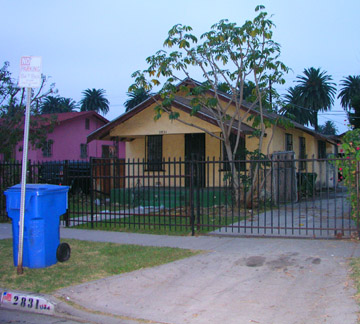
It’s no wonder folks fetishize postwar America-the anteplaystation years-while now grown men sit together in front of some giant screen (all those years donating plasma finally pay off), back in ’47 we were Men, and we had drinking parties. (We’ll ignore the homorerotic overtones within the Times’ use of the phrase “drinking companion†and Mrs. Hepner’s account that the two were “playing pretty rough.â€)
In any event. The drinking party: you drink, you get drunk, somebody dies. That‘s a party, you computerized pansy.